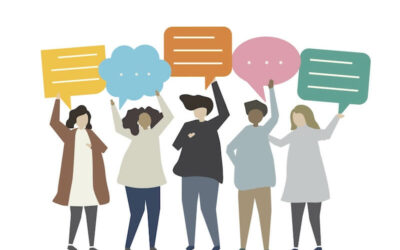
By: Betty Lochner
When my son started college on the other side of the state, he began juggling school, a part-time job, his new social life, new living arrangements, and adjusting to being away from home. I noticed through our short weekly conversations that he was feeling overwhelmed. Most of his updates focused on what was going wrong.
As a new college parent, I was feeling stressed out about, too; mostly about how I could help him without lecturing or meddling.
It’s understandable that starting college is stressful for him. And, if your student doesn’t learn some tools to help manage it, stress gets worse over time. That can lead to illness, frustration and even depression.
So how can we as parents help them manage?
One way that has been proven to be successful is to learn how to practice daily intentional gratitude.
What is gratitude and how does it help?
Gratitude is a way for us to discover and acknowledge the goodness in our lives, whether tangible or intangible. It is the practice of being thankful for what we have and what is going well, rather than dwelling on what we don’t have or what isn’t going well.
The benefits of practicing daily gratitude can help create a more positive mindset in your college student’s life. Other benefits can be more confidence, better health, less stress, and stronger relationships.
Once I started reframing our weekly conversations and teaching my son to use positive energy and gratitude, I saw a difference in how he was coping. He was less focused on everything that was stressful and more focused on his successes – meeting a new friend, upgrading his dorm room, doing well on a test.
Check out these tips for teaching intentional gratitude:
Be positive.
When you talk to your student, always start by asking what’s going well in their life. Even if their college life is stressful or something bad happened, there is always something that is going well. Remind them of that and always start by being positive when you connect.
Model gratitude.
Talk regularly about what you are grateful for in relation to events happening in their life right now, as well as big picture ideas like family, friends, education.
Make an appreciation board.
Similar to a vision board, a gratitude board reminds us of all we love and appreciate in our lives. It can be a simple poster board with pictures of friends, family, pets, favorite things (coffee, sports), and can include some favorite quotes. The idea is to see and be reminded of all you are grateful for.
Encourage letters and cards of appreciation.
Notes of appreciation to a friend, faculty member, or someone that does something helpful or nice, is a great reminder of who is on your student’s side and supporting them. It’s a powerful way to demonstrate appreciation for others and sharing gratitude is almost as powerful as receiving it.
Start a gratitude jar.
Give you student a jar to put notes, tokens, happy thoughts and encourage them to use it to hold onto to the good things going on in their life. They can write something down daily or weekly to add, or simply as things happen that they enjoyed and feel good about.
Keep a gratitude journal of positive thought and feelings.
Encourage your student to keep a gratitude notebook or journal. Taking a few minutes to write down daily positive thoughts, even when things aren’t going well, will help your student be reminded of what is going well in their world.
Since my experience with teaching gratitude to my son (and my daughter who was in high school at the time), I’ve been keeping my own gratitude journal. It’s has had an incredible impact on my life. One of my favorite journal prompts is to simply list 3 good things that happens each day as well as what I’m grateful for in those moments. It can be anything – like seeing someone smile or hearing birds chirping outside while walking home after class. Here’s the link to download a journal sample: 7 Days of Gratitude.



